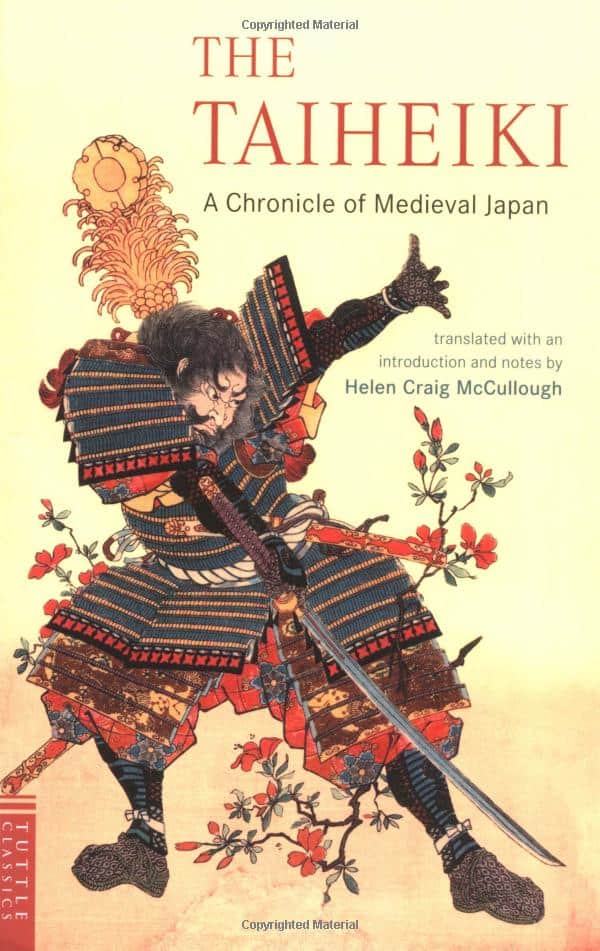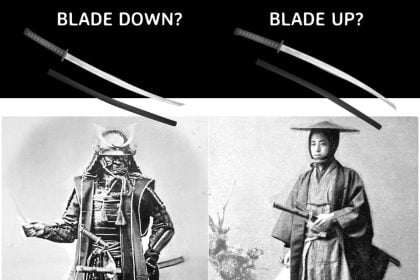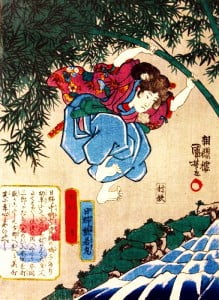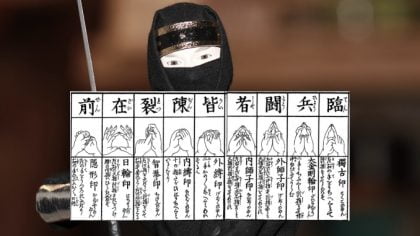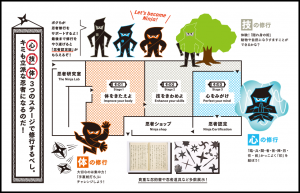Japanese ninja history is shrouded in secrecy and confusion. Everything we know seems uncertain and is further tainted by pop culture. The very little-known facts are disputed among experts. So, are ninjas even real?
With reliable proof so elusive, how can you be sure that the ninja ever existed? What if what we know about ninja history were just myths of ignorant feudal commoners, passed from generation to generation?
If they were indeed real, how did they come about? And finally, do ninjas still exist today?
Why is it difficult to prove that ninja existed?
Secrecy of the Profession
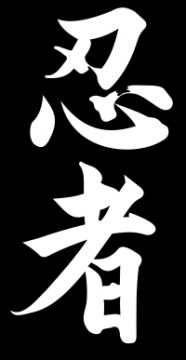
Here’s the problem with ninja history.
The ninja were supposedly involved in espionage, assassinations and sabotage. They were the historical equivalent of intelligence operatives, assassins, and special forces.
Therefore, records of them would have been well-guarded or destroyed. In fact, back then, it was common for secret information to be passed orally.
Face it… No shinobi is going to reveal their techniques and strategies when their job and victory demand secrecy.
Yet, this makes proving their existence and modus operandi difficult. After all, it would be ridiculous to believe any extraordinary claim without any proof.
Exaggerations to create fear
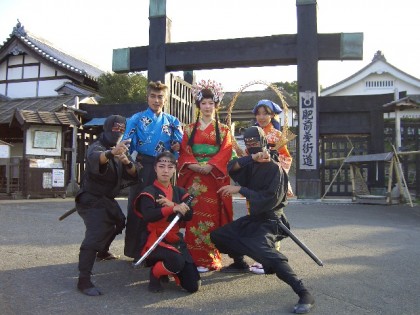
Because of the lack of information, tall tales about ninja arose. Ninja themselves supposedly encouraged these exaggerations to strike fear in their enemies.
With folktales and romanticised pop culture stereotypes in the mix, separating fact from fiction becomes a challenge.
These reasons make ninja and ninjutsu a difficult topic to research. Karl Friday, a noted historian, has reservations at even accepting primary sources from the 1600s as concrete.
Note: The term “ninja” can be used to refer to ninja in singular or plural form.
What are some reliable sources that prove ninja existed?
So, are ninjas real? Is it impossible to know?
Fortunately, researchers have been able to analyse and corroborate sources to make a fair case for the ninja’s existence. Here are some compelling evidence that prove that the ninja existed.
The 3 Key Ninja Manuals
Back in the Edo period, three authoritative sources on Ninjutsu were written by actual shinobi and samurai. These sources that discuss espionage techniques, tactics and mindset are the: Bansenshukai (aka. Mansen Shukai), Ninpiden (aka. Shinobi Hiden) and Shoninki (free translation here).
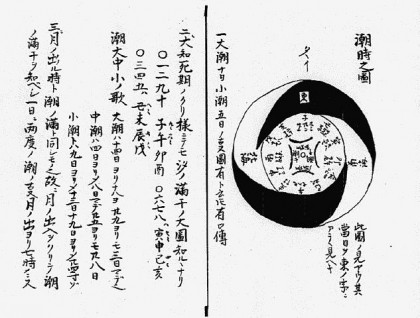
But what makes researchers believe that these sources are not the work of charlatans? After all, anyone, from any time period, can write a book and claim themselves to be descendants of the ninja.
Here’s why.
The three widely accepted sources were written by people who were highly regarded in society back then. They were also part of the bushi-class.
The Bansenshukai is a collection of detailed knowledge from two places well-known for ninja activity, compiled in 1676 to preserve the knowledge of warfare and Ninjutsu. It was presented to the Tokugawa shogunate.
The Shoninki was a ninjutsu writing from Kishu province.
The Ninpiden (aka. Shinobi Hiden) was a secret manual passed down in the Hattori clan.
The motives of the sources (written by different people in great detail) made for acceptable proof. Not to forget, these texts were cross-analysed with other historical documents before being accepted as reliable sources of ninja history.
Oral Tradition of The Oldest Sword School in Japan teaches Ninjutsu
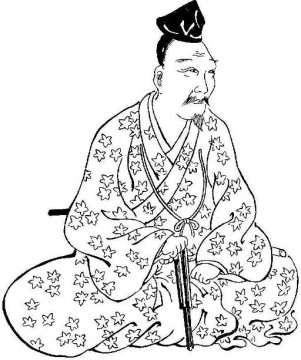
Among the oldest recorded sword schools in Japan is the Tenshinsho-den Katori Shinto-Ryu. It has been verified, registered and recognised by two reputable Koryu organisations that rigorously examine scrolls for unbroken historical lineage. Within this sword school is an oral tradition that teaches Ninjutsu, with focus on defence against detailed Ninjutsu techniques.
The presence of a historical school “curriculum” that deals with ninjutsu suggest that the ninja were a common threat in the past.
Note: Koryu martial arts are Japanese classical martial arts with a lineage that can be traced before the Meiji period.
Reliable References and Chronicles about Ninja History
The Shomonki (aka Shoumonki), compiled around 940AD, was probably the earliest source that makes references to the ninja. However, it isn’t clear if the term “ninja” (or any equivalent terms) were used.
Another war chronicle in the 14th century, the Taiheiki, has even more references to the ninja. Though this source is known for its dramatizations, it is still widely accepted as mostly accurate.
The Taiheiki (Translated)
14th-century war chronicle with references to the ninja, widely accepted as mostly accurate.
There are also other sources and family scrolls that mention the shinobi.
So, are ninjas real? The sources of evidence above prove (with reasonable certainty) that they existed.
Moving on. Let’s piece together the history of the ninja to find out if they still exist today.
Do ninjas still exist? To find a ninja, you need to know what is a ninja
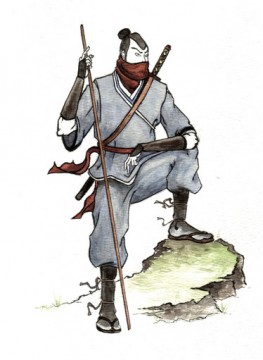
The ninja were spies and mercenaries in Japan, who were trained in the covert art of Ninjutsu, to fulfil the function of espionage and subterfuge. The term “ninja”, unlike “samurai”, referred to a profession and role; being a samurai was a social class that a person was born into. While this distinction technically means anyone could be a ninja, the majority of sources indicate that ninja came from the samurai class.
The art of Ninjutsu can be understood to be (1) the gathering of intelligence and (2) the execution of strategic activities that were aimed at diminishing an enemy’s military might; this meant spying, infiltration, assassination and sabotage.
Since shinobi were not the only ones who engaged in espionage, what distinguished ninja from other groups with similar skills?
According to the Shoninki, ninjas were not employed for selfish or criminal purposes. Unlike the nusubito (thieves), they aligned themselves with a political cause and warfare (i.e. in service of a feudal lord). This largely clarifies how the term “ninja” was applied to people in history.
Note: Only information that is accepted as reliable ninja history by scholars, historians and researchers have been included in this article.
Who were the ninja?
Samurai Class
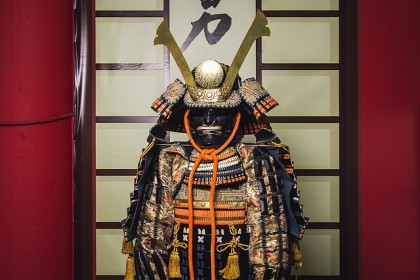
As mentioned, ninja came mainly from the samurai class. The dispute here arises due to a longstanding opinion that unconventional warfare was incompatible with the samurai’s Bushido code, which prizes honour. This has to do with the romanticised misunderstanding over what “honour” means to the samurai.
If a samurai’s lord so commands – based on my understanding of Antony Cummin’s explanation – it is deemed honourable to use Ninjutsu against the enemy.
Female Ninja Existed
Despite Japan being a highly patriarchal society, there were female ninjas (commonly known as kunoichi). The most famous – and only rumoured – kunoichi was Mochizuki Chiyome, wife of a samurai.
Iga and Koga
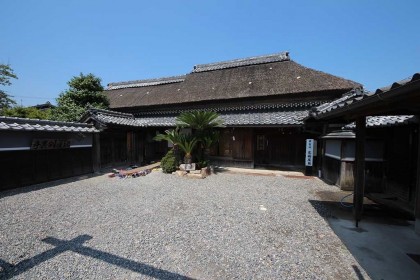
Of all of Japan, two places are rich in ninja history: Iga and Koga (respectively known as Mie and Shiga prefecture today). There are a few possible reasons:
- Iga and Koga were near the old capital, Kyoto, where the imperial court (or politics) was.
- Where the rest of the feudal domains could rely on farming for income, the land in these places was less suitable for farming.
- There are also rumours that the people in Iga and Koga descended from yamabushi (warrior monks).
Based on the Bansenshukai, where the rest of Japan had military governors, each Iga and Koga clans was self-governed and had their own castle estate. The reason behind Iga and Koga ninja’s effectiveness was due to the countless battles among their clans, which served to refine their Ninjutsu skills.
Ninja History: When and where did the ninja originate?
The ninja – as a trained force in a structured system – was agreed by most historians to have come to exist in the 15th century, the Sengoku (aka. the Warring States) period.
Before, skills associated with Ninjutsu existed but were not yet structured into a system of espionage and subterfuge. Or, at least there was no mention of the term “ninja” or any of the equivalent terms before that period.
Influence from ancient China and other countries
The idea of espionage first appeared within Sun Tzu’s Art Of War (Chinese military treatise dating back to 5th century BC) and was important to military victory.
This, however, doesn’t mean that Ninjutsu as a system was Chinese in origin. The Art Of War was simply a popular treatise that influenced military strategy in Asia. Those military strategies and what developed later on in China entered Japan.
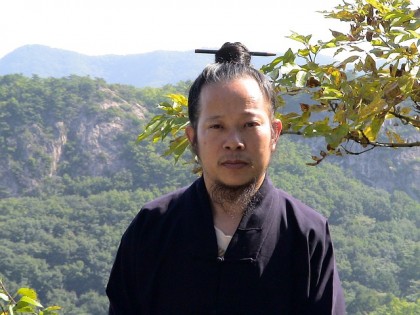
There are two theories on how the information entered Japan: (1) escaping generals of the toppling Tang Dynasty and (2) Chinese monks.
At present-day, there is a disconnect with the idea that monks would hold complex knowledge on warfare. But back then, these monks fulfilled the roles of intellectuals, philosophers and doctors. Since they travelled around often, they absorbed knowledge and cultures from where they visited, unlike commoners. There was no internet back then to transmit information.
And so, Chinese monks who had their teachings from India later taught medicinal knowledge, military strategies and martial arts to the yamabushi (Japanese mountain monks).
These sources of knowledge in military strategy (mainly espionage), medicinal knowledge and temperament of the people who absorbed them would play a part in forming Ninjutsu during the Sengoku period.

Folklore reinforces Yamabushi connection
The ancestors of the ninja were said to be Tengu, supernatural beings of the mountain. And, the Tengu were often associated with the yamabushi. This suggests that the yamabushi had some influence on the birth of ninja.
It is noted that at least one yamabushi, Sessai Choro, was known to be a military advisor during the Sengoku period.
Early use of Espionage in Japan

No ninja yet. But many spies that fulfilled similar functions existed.
The first recorded use of espionage and subterfuge in Japan was in the 6th century by Prince Shotoku, who acted as regent.
Unverifiable Mentions
Many ninja history articles acknowledge Daisuke Nishina as the founder of Togakure school in the 12th century. However, the history of this school (and its existence) has neither been supported by independent sources nor verified to be koryu.
Sengoku period (1467-1603)
The Warring States period was a time of great political unrest and violence in Japan. The gist of what happened has to do with the shogunate losing control and feudal lords vying for power and territory.
Ninjutsu developed because of the need for unconventional warfare. Naturally, the shinobi became highly sought after.
In 1487, Mochizuki Izumo honoured his clan’s promise to defend Rokkaku if it was ever attacked; Shogun Ashigake had led troops into Koga. With the use of unconventional tactics, the enemy was defeated by seemingly supernatural factors and a force that numbered 15 times smaller than the enemy troops.
This was, to the best of my knowledge, among the first known use of professional ninja in Japanese history.
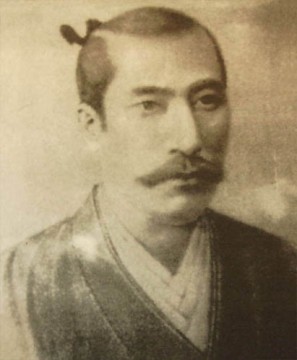
In 1579 and 1581, Oda Nobunaga launched attacks in the Iga province. This is known as the Tensho Iga War 1 and 2 respectively.
Iga and Koga were the largest strongholds of professional ninja, and their mountainous terrain made it difficult for the enemy to launch attacks successfully. However, Oda Nobunaga’s troops succeeded in defeating the Iga rebellion, causing the ninja to flee.
Many of these ninjas would be sheltered and employed by Tokugawa Ieyasu, the first Tokugawa shogun who ushered a period of peace for roughly 260 years.
Oda Nobunaga nearly united Japan after more than a century into Sengoku but committed seppuku (ritual suicide) after being betrayed by a trusted general. Toyotomi Hideyoshi took over and finally unified Japan. Yet again, political instability broke out after Toyotomi’s death.
Tokugawa Ieyasu came through as victor during the decisive Battle of Sekigahara. Ninja and espionage played a significant roles in the mentioned battle and many others.
Note: The year when the Warring States period ends has been debated by scholars. Some consider it to be 1573, 1600, 1603 and 1615. For this article, I adopted 1603 as the end. It corresponds to the establishment of the Tokugawa government.
Edo period (1603-1868)
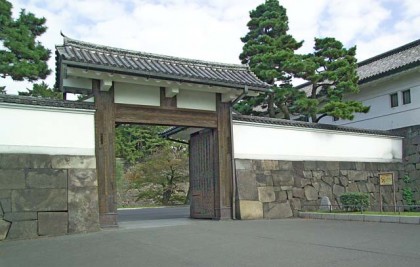
The system of feudalism meant central power was with the Tokugawa shogun in Edo, modern-day Tokyo. The other feudal domains were governed by lords who were related by blood, allies and even defeated lords.
To prevent any feudal domain from usurping power, there were strong measures taken by the Tokugawa Bakufu. Though the emperor was at the top of all feudal classes, he was merely a figurehead with no real power.
During this time, the ninja of Iga and Koga were employed by the Tokugawa. To the best of my knowledge, the last use of ninja for their actual role of espionage and subterfuge was during the Shimbara rebellion in 1638.
Oniwaban
Nonetheless, in the 18th century, the Oniwaban was established to serve as the shogun’s spy network and de facto secret service. They would work in the inner gardens of the feudal lord residences to observe the ongoings of every person. There is some debate as to whether the Oniwaban were considered ninja but their supervisors definitely were.
The End of The Ninja History and Ninjutsu
After the Edo period, there is no evidence that ninja existed as a profession. The modernisation during the Meiji period, the collapse of feudalism, and military advancements made the ninja obsolete.
While possible that existing ninja joined the modernised military or police force, the same conclusion remains – ninjutsu is no longer practised for its intended use.
Recall that the ninja profession is dependent on the structure of feudalism and constant warfare. Without these, it wouldn’t flourish or exist.
But what about the descendants of ninja teachings? The people who taught and practice Ninjutsu?
Present-day: The Real Last Ninja of Japan & Ninjutsu Schools
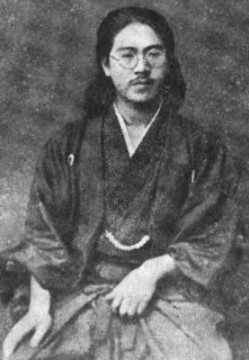
The four most popular names associated with being the last ninja in modern Japan are Toshitsugu Takamatsu, Seiko Fujita, Masaaki Hatsumi and Jinichi Kawakami. While all of them are outstanding individuals who have contributed to the promotion of Japan and the martial arts, their Ninjutsu lineages has not been satisfactorily verified.
The same thing can be said about all existing Ninjutsu schools today. No Ninjutsu school at present-day, derived or otherwise, falls under Koryu bujutsu. This is a topic that is covered here.
There is, however, an exception mentioned earlier that has been verified sufficiently – Tenshinsho-den Katori Shinto-Ryu. Its syllabus contains a part on Ninjutsu. But to call it true ninjutsu would be a stretch as Katori Shinto-Ryu is predominantly a sword art, and the Ninjutsu taught is defensive.
Aside from that, do ninjas still exist in some form?
Surely the special forces and modern spies qualify as ninjas, do they?

Covert operatives (like the CIA and special forces) are often thought of as modern-day ninja. This is, no doubt, a logical evolution of the ninja’s role. After all, the techniques and tactics they use are similar to ninjutsu.
So, similar profession and training equal ninja?
No. This reasoning is flawed and requires you to loosen the definition of “ninja” by a long stretch.
Here’s why.
The Problem of Using “Ninja” Loosely
Espionage and subterfuge tactics do not belong exclusively to the ninja. Nearly all pre-modern cultures have spies and saboteurs.
For example, Chinese spies appeared in history before the ninja and did something similar to Ninjutsu. Does this make them ninja?
If you loosened the definition to include modern operatives, pre-modern Chinese spies would qualify. Worse still, thieves and bandits who stalk their victims before committing a crime could also qualify.
This highlights the problem of discarding the geographical and structural scope of what defines the shinobi. For a conducive academic discussion about the “ninja”, boundaries with its use and definition are crucial.
Ninjutsu is not the main source espionage knowledge today

Furthermore, the tactics of present-day operatives come from many sources, both present and historical. Historical sources include warfare and espionage methods from different pre-modern civilizations, not only ninjutsu.
Since modern espionage tactics cannot claim ninjutsu as its main source, it would be wrong to say covert operatives of today are technically ninja. They could very well be Persian spies, samurai, Spartans and Vikings.
This sums up why modern covert operatives are not ninjas. An evolution of ninja and other pre-modern spies? Definitely!
Conclusion: Do ninjas still exist today?
Based on the evidence provided, ninja do NOT exist today.
Also, the practice of ninjutsu as a distinct ryuha has not been proven to survive to this day. There are certainly modern Ninjutsu schools operating, but proving an unbroken lineage satisfactorily remains an issue.
While the modern military may have taken over the role of the ninja, they do NOT qualify under the proper definition of shinobi.
If you are training in a modern Ninjutsu school, please continue doing so. Just because a martial art cannot be proven to have historical links beyond the Meiji era, does not make what you are doing any less effective, legitimate or impressive.
Find out more about modern ninjutsu schools and the problem with proving actual historical lineage.
Note: To the best of my ability and time constraints, I have cross-referenced research from various experts to piece together a fairly accurate history of the ninja. There were many sources on ninja history that I had to reject because of biases and lack of independent verification.
Acknowledgements & Citations
I’d like to acknowledge these people whose evidence-supported views helped clarify my understanding about the ninja and provided further sources: Thomas Urso, Gabriel Rossa, Feodor Kubasov, Nathaniel York and Zoran Mijic (members of the Historical Ninjutsu and Samurai Warfare group).




